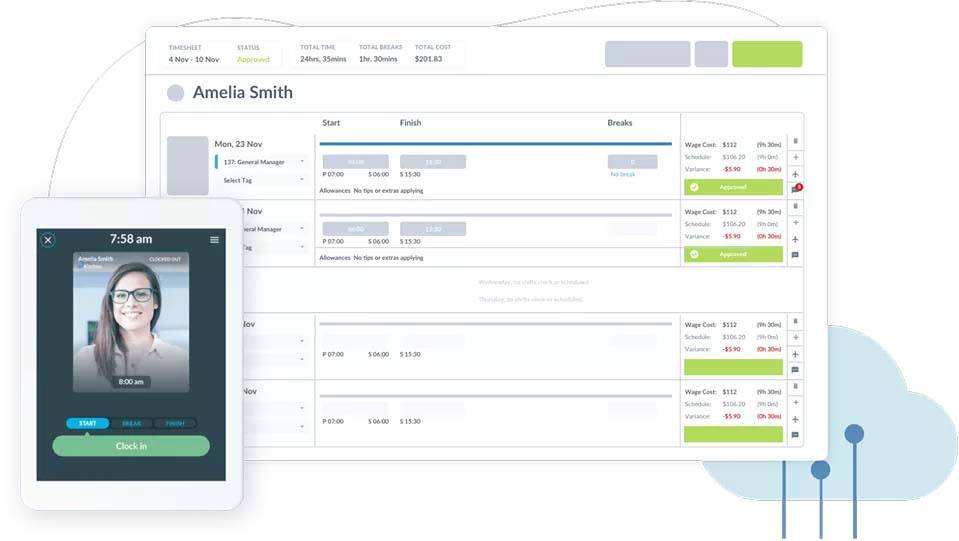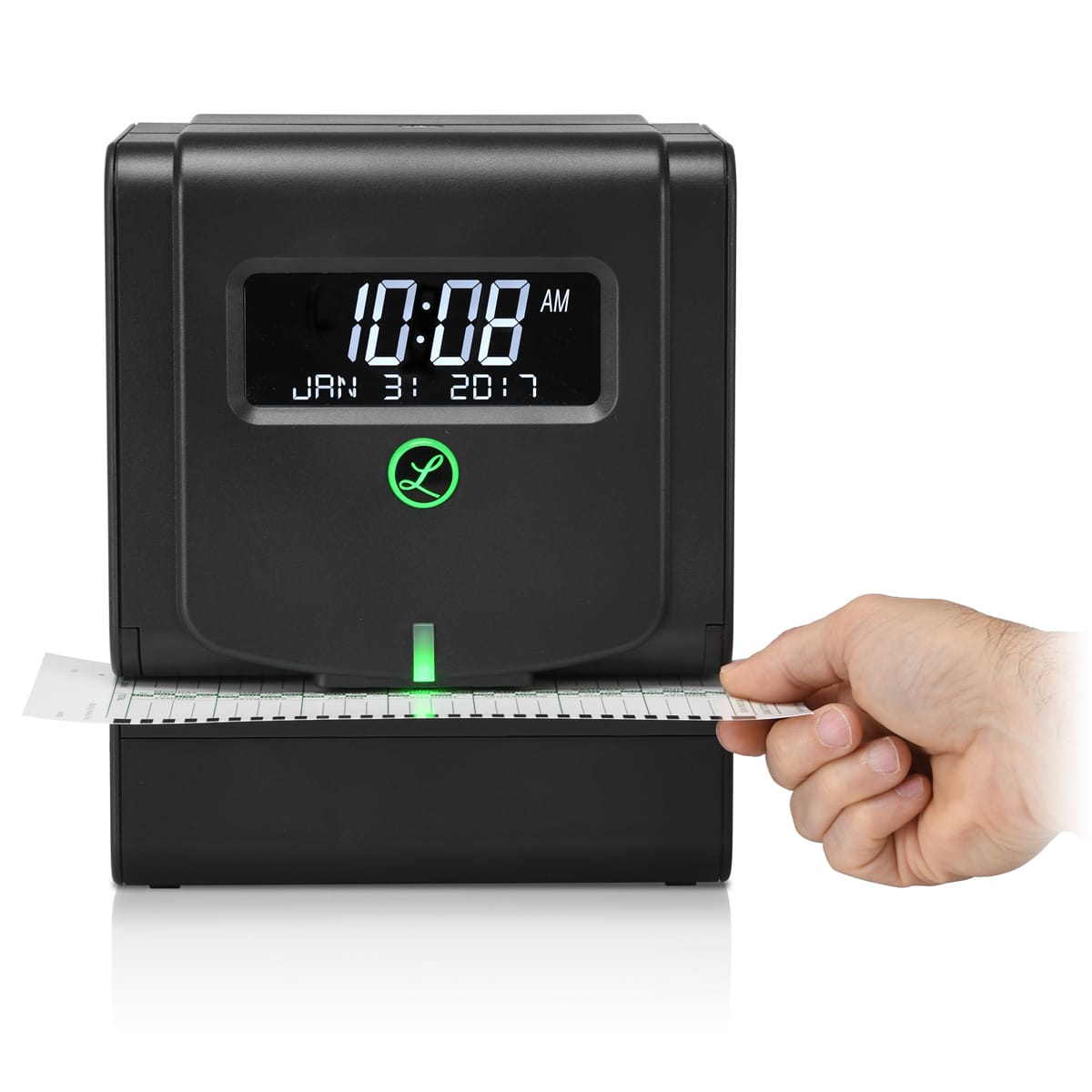Summary
-
Using a software solution to improve your time-tracking is a great way to ensure you’re recording time and attendance data regularly and accurately.
-
Following our time-tracking best practices helps you identify problematic patterns that lead to employee lateness.
-
Understanding the extent and causes of lateness inside your company will allow you to implement changes that will help reduce tardiness altogether.
Your employees turning up late to work from time to time is normal and to be expected, to a certain extent. The problem is when patterns of habitual tardiness start to emerge.
The most obvious issue with employee tardiness is the added costs to your business. An employee who is 10 minutes late every workday will have taken the same amount of time as one week’s paid vacation by the end of the year.
Besides the cost, employee lateness and absenteeism can negatively affect productivity, which trickles down to your customers and can tarnish your company’s brand image. Tardiness can also mean more pressure if work is shifted onto other team members, leading to burnout and low morale.
Accurate employee time-tracking and consistent recordkeeping help you identify the patterns and causes of employee lateness. Business owners often turn to time-tracking software to do this and to prevent tardiness from getting out of control.
Here are 10 employee timekeeping best practices you can use to encourage timeliness and efficiency at your business.
1. Keep precise records
Accurate time and attendance data is the foundation of any timekeeping initiative. Without knowing exactly who is on time, who’s late, how often they’re late, and by how much, fixing the problem feels like working in the dark. Having access to this data in real time makes employee time tracking easy.
Use time and attendance software to put this informational bedrock in place from the start. Once you know that you are accurately recording attendance data in a usable form, you’ve made any new timekeeping initiative much easier to manage.
2. Track data regularly
Manual entry timekeeping systems are prone to errors, yet so many small businesses still rely on spreadsheets for tracking employee hours. The longer you leave gaps in the data, the greater the chance that employees will forget what time they arrived or left.
If your company is still using manual timecards and employee timesheets, you should be collating that data daily, when possible, or weekly at the very least. Don’t get complacent if you’ve swapped manual methods for a software system. Be sure to generate attendance reports at a similar cadence, at least once a week. The sooner you spot a problem, the more quickly you can address it.
3. Spot problematic patterns
Consistent data tracking helps you spot the problematic patterns holding your business back.
Once you have your regular cycle of time and attendance data in place, take a holistic view of what it is showing you about your business over time. Look for deeper recurring patterns related to particular shifts, managers, or locations. There may be a simple fix for hotspots of poor timekeeping methods, but if you don’t know a hotspot exists, you’ll never be able to address it.
Webinar: The Best Way to Replace Call-Outs
4. Have a clear point of contact
A clear management hierarchy means there’s no confusion over attendance issue reporting.
Make someone responsible for time management and maintaining accurate timesheets. This could either be on a per-shift basis or per location or department. Make it clear their role isn’t simply to punish late arrivals but to work with employees to resolve issues that might be affecting their attendance.
5. Use a point system
More companies are switching to point-based systems to track and penalize employee tardiness. These attendance point systems work by automatically assigning staff points for various infractions such as clocking in late, leaving early, or never showing up. HR can use these point records to build a case and take appropriate action against repeat offenders.
This kind of system is perhaps the most practical way of dealing with lateness. Since points are automatically accumulated for showing up late, employees are much more likely to be incentivized to be on time to avoid verbal and written warnings.
Webinar: Points-Based Attendance
6. Normalize healthy working hours
If staff are constantly expected to work late, they’ll be tempted to claw the number of hours or minutes back from somewhere else.
This is the flip side of making sure everyone arrives promptly. Show staff they’re expected to leave on time as well as arrive on schedule while still encouraging those who actually want overtime hours.
The WHO recently released estimates of a 29% increase in deaths from heart disease and stroke brought on by long working hours. Even if those figures are off, the days when people would tolerate overwork are on the way out. Be ahead of the curve in this area, and staff will notice.
7. Introduce and automate break times
Offering breaks means staff have fewer reasons to be late in the first place.
Breaks and paid meal periods are not required by labor laws in the US, but they benefit employees and employers alike. Staff who take lunch breaks are more productive, loyal, and engaged.
Research shows that one in 10 employees never break for lunch, and nearly half just eat at their desks three or more times a week. If managers are seen taking their lunch break away from their desks or workstations, that gives employees permission to do the same. An effective employee scheduling system should allow you to automate these breaks into the daily workflow, sending staff reminders when it’s their break time. These reminders encourage staff to actually take their breaks, unlike in non-automated systems where properly timed breaks can often go overlooked.
If staff feel the company values their time, they’ll value the time they give to the company. When they know they’ll have an opportunity during the day to make that important personal phone call or just grab a sandwich, there’s less reason for them to cram those things in before work, which makes them late.
8. Use predictive scheduling
Often lateness occurs because people are trying to accommodate their lives around erratic working hours.
Predictive scheduling is already legally required in some states, but it’s worth considering, even if it’s not mandatory. Setting schedules two weeks in advance gives employees time to plan. By reducing the number of frantic child-minding emergencies and other last-minute problems, you reduce the reasons for people to arrive late to work.
Webinar: How to Optimize Your Staff Schedules
9. Lead by example
Creating a company culture in which timekeeping is valued starts from the top.
Hold yourself, managers, and even executives to the same standards as other staff. Make it clear that being diligent with work time is expected of everybody. If management rolls in at 9:30 am several times a week, don’t be surprised if staff start to view prompt attendance as a moving target and follow suit.
10. Set and reward goals
Rewarding staff for being at work can be seen as a false economy, essentially paying them twice for doing what they are already contracted to do. That doesn’t mean there aren’t ways to incentivize good attendance.
Applying bonuses to teams rather than individuals helps boost morale while maximizing engagement and attendance. Rewards don’t need to be financial in nature. If employees maintain punctual time reports by the end of the week, give them an early finish on Friday. You could even show appreciation through something simple like praise in the company newsletter or being given control of the workplace Spotify for an afternoon.
Identify and address lateness before you have an absenteeism problem
Proper attendance tracking is about more than just reprimanding people for being late. Patterns of poor punctuality are a warning. Addressing them is a health check of your company’s staff engagement and an opportunity to create a happier, more productive working environment.
Use attendance tools like Workforce.com to fully integrate these ideas into your business.
If you find your employee tardiness problem is morphing into a more severe absenteeism problem, it may be time to take additional measures. Watch our webinar on absenteeism below featuring Anne Laguzza, CEO of The Works Consulting.










